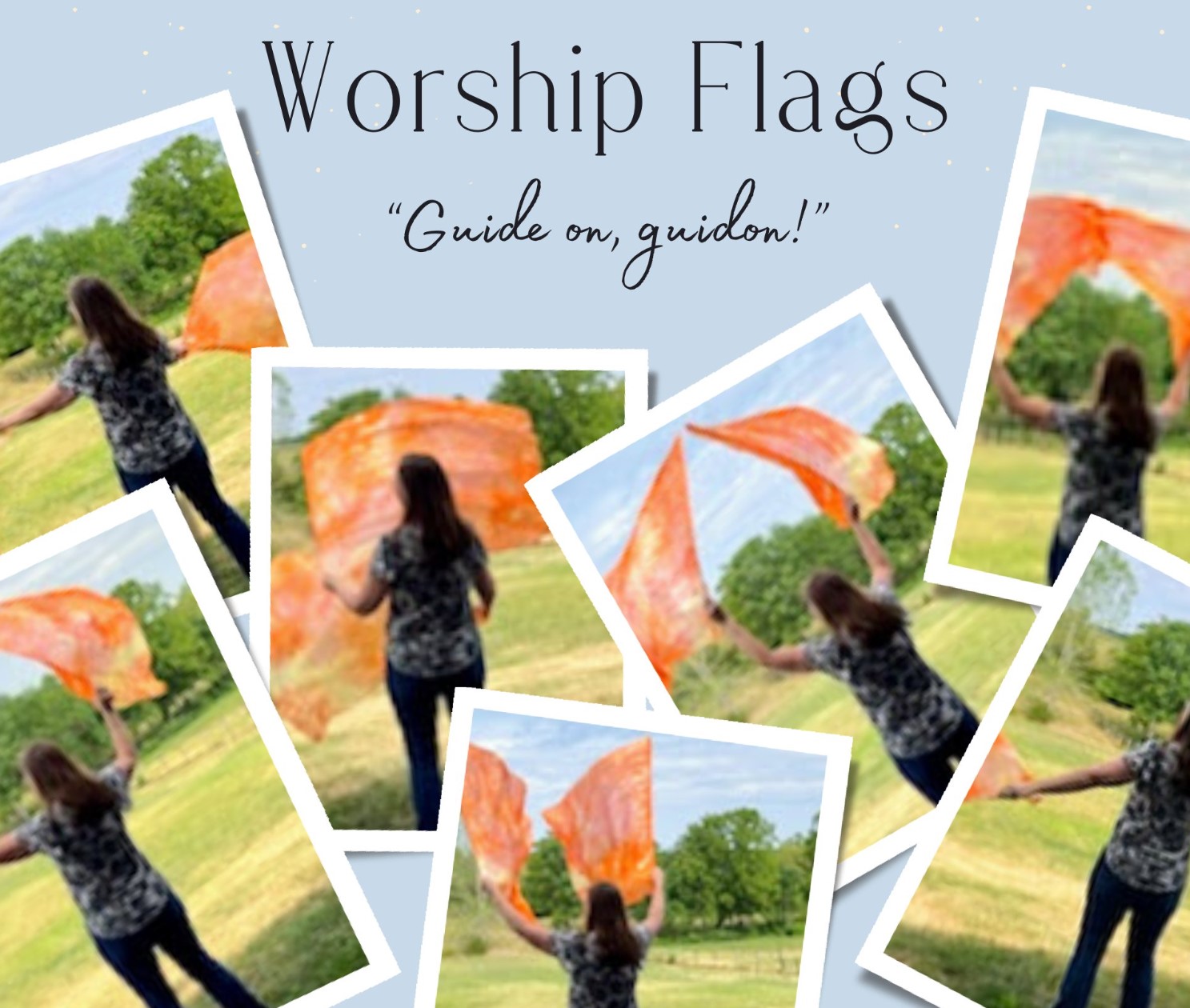Worshipping God with Flags
In the late 1980s, in military tech school, I served as guidon (flag bearer) for our unit. That sounds like a great honor (and it was). Still, in all likelihood, I was chosen for that position solely because I was the tallest female in the unit. The guidon not only shoulders the unit’s flag but also sets the marching pace. With this in mind, let’s talk about worship flags briefly.
Historically, each of the twelve tribes of Israel had its own military flag, which reflected its identity. In some cases, family units or clans have also adopted their own flags to reflect purpose or vision. Flags and banners are not to be taken lightly. They’re not for show or fun but for worship and warfare. The guidon carrier (flag bearer) is the unit representative of military troops. The person carrying the guidon marches out in front of the soldiers. The guidon is the rallying point for troops to fall into formation when the order is given. We know that flags and banners have no power, but they can serve as a vehicle to communicate or share your heart with God.
In some churches, worship flags are used to visually demonstrate a spiritual truth. Most often, worship flags or dance teams partner with the worship team to usher in the Lord’s presence. Preparing hearts to encounter God is crucial, for God inhabits our praises. But is this practice scriptural? Let’s look at a few scriptures.
Of the LORD, Psalm 22:3 (KJV) declares, “But thou art holy, O thou that inhabitest the praises of Israel.”
Psalm 18:34 of The Aramaic Bible in Plain English, says: “He teaches my hands to war and strengthens my arms like a brass bow.”
Jeremiah 50:2 says, “Announce and declare to the nations; lift up a banner and proclaim it; hold nothing back when you say, ‘Babylon is captured; Bel is put to shame; Marduk is shattered, her images are disgraced, her idols are broken in pieces.’”
Isaiah 13:2 says, “Raise a banner on a barren hilltop; call aloud to them. Wave your hand, that they may enter the gates of the nobles.”
Isaiah 51:12 (NASB) says, “Lift up a signal flag against the walls of Babylon; Post a strong guard, Station sentries, Set up an ambush! For the LORD has both planned and performed What He spoke concerning the inhabitants of Babylon.”
Isaiah 31:9 (NLT) says, “Even the strongest will quake with terror, and princes will flee when they see your battle flags,” says the LORD, whose fire burns in Zion, whose flame blazes from Jerusalem.
Psalm 60:4 (AMP) says, “You have set up a banner for those who fear You [with awe-inspired reverence and submissive wonder—a banner to shield them from attack], A banner that may be displayed because of the truth. Selah.”
Psalm 20:5 from the ESV translation says, “May we shout for joy over your salvation, and in the name of our God set up our banners! May the LORD fulfill all your petitions!”
Under the heading of “A Victory Decree,” Psalm 20:4-5 (TPT) says: “May Yahweh give you every desire of your heart and carry out your every plan as you go to battle. When you succeed, we will celebrate and shout for joy. Flags will fly when victory is yours! Yes, God will answer your prayers, and we will praise him!”
Is the concept of worship flags new to you? Up until a few years ago, I had never been in a church where dance or worship flags were present. Still, I was fascinated from the very beginning. The Lord Himself taught my hands to move as flags. It’s a simple modified Figure 8 formation.
In 2019, a new friend gifted me with my first set of worship flags (seen in these photos). While vacationing in Florida, she obeyed the nudging of the Lord to attend a special event at a church in the area. There, she discovered a woman selling silk worship flags. The orange and yellow set in the photos is called “Firebrand.” Without thinking twice, she purchased the flags as a Christmas gift for me! It was a huge God-wink for both of us.
The different colors of the flags represent various concepts. For instance, white flags can mean surrender, purity, or Bride; gold and purple flags may represent a governmental anointing, royalty, priesthood authority, or covenant; blue flags may represent wind, revelation, breath, the river of life, or the flow of the Holy Spirit. When you purchase worship flags, they’ve been anointed and prayed over to prepare them for service.
Therefore, worship flags can act as a beacon for rallying the troops, demonstrating identity, or staking territory. I believe we can also know the Lord’s heart regarding worship flags. In Exodus 17:15 (NLT), “Moses built an altar there and named it Yahweh-Nissi (which means ‘the LORD is my banner’).”
In Song of Solomon 6:4 (NLT), He says, “You are beautiful, my darling, like the lovely city of Tirzah. Yes, as beautiful as Jerusalem, as majestic as an army with billowing banners.”
In Song of Solomon 2:4 (AMP), we read, “He has brought me to his banqueting place, and his banner over me is love [waving overhead to protect and comfort me].”
Is God your rallying point? Is He your Banner? Has the Lord granted you victory? Is He worthy of all praise?


.png)